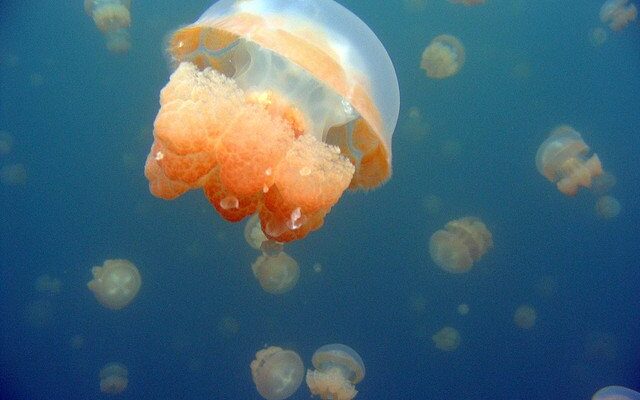Jellyfish Lake
Jellyfish Lake is a small lake, the highlight of the Rock Islands archipelago (Rock Islands) in Palau. At first glance – the most ordinary lake, but it is worth to go under the water, a person enters another world, a world of regal tranquility, peace, one gets the impression that nature here is engaged in meditation.
.Jellyfish Lake is located in the eastern part of the islet Eil Malk. It is a relatively small lake with dimensions of 460 by 160 meters. The water in the reservoir is brackish, which is quite natural, because the lake is separated from the ocean by a small strip of land, only 200 meters. The depth of the lake is 50 meters, but it was enough to form a stunning world that attracts divers from all over the world – the kingdom of jellyfish.
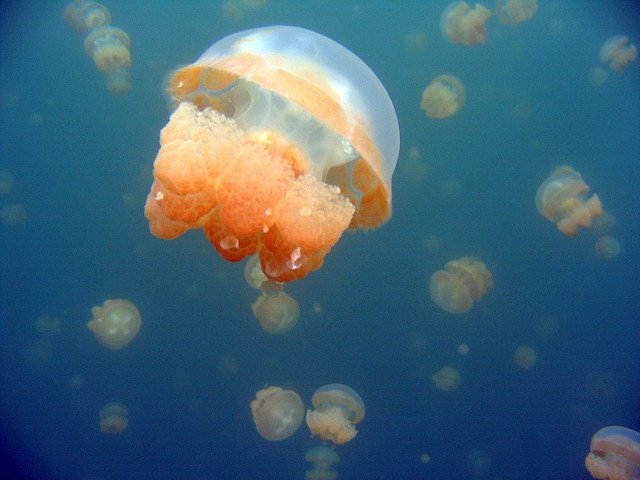
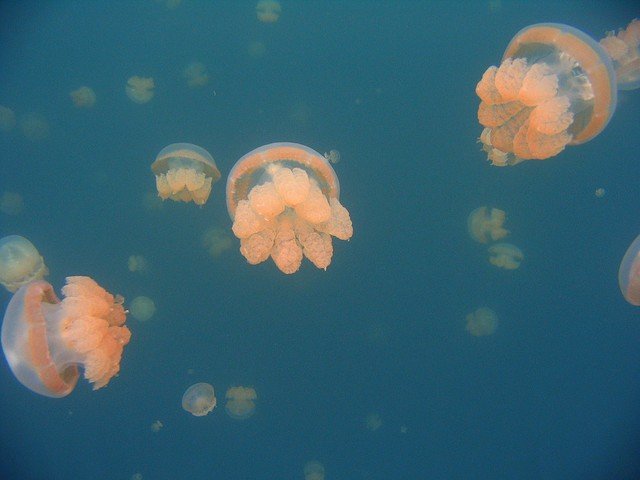
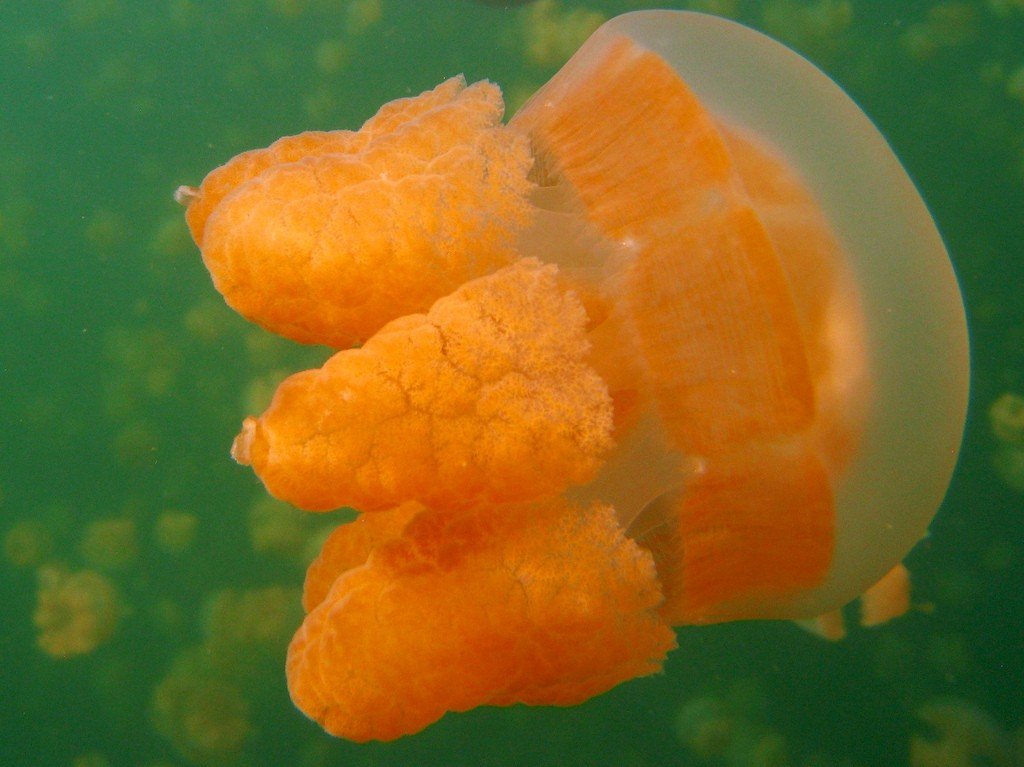
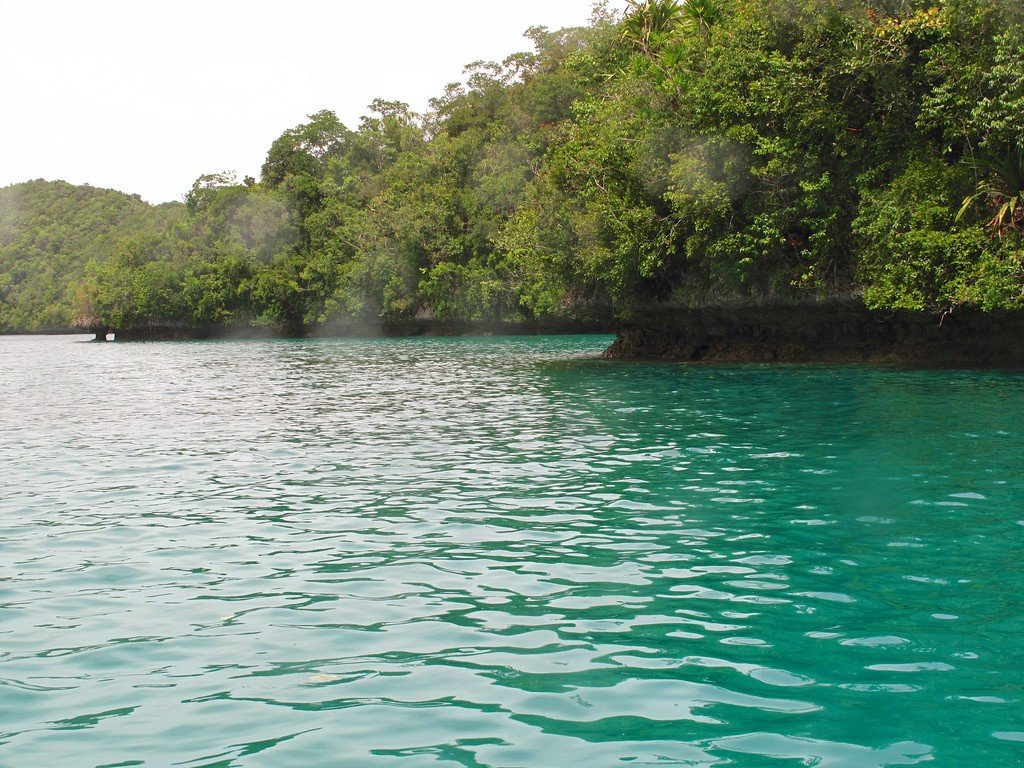
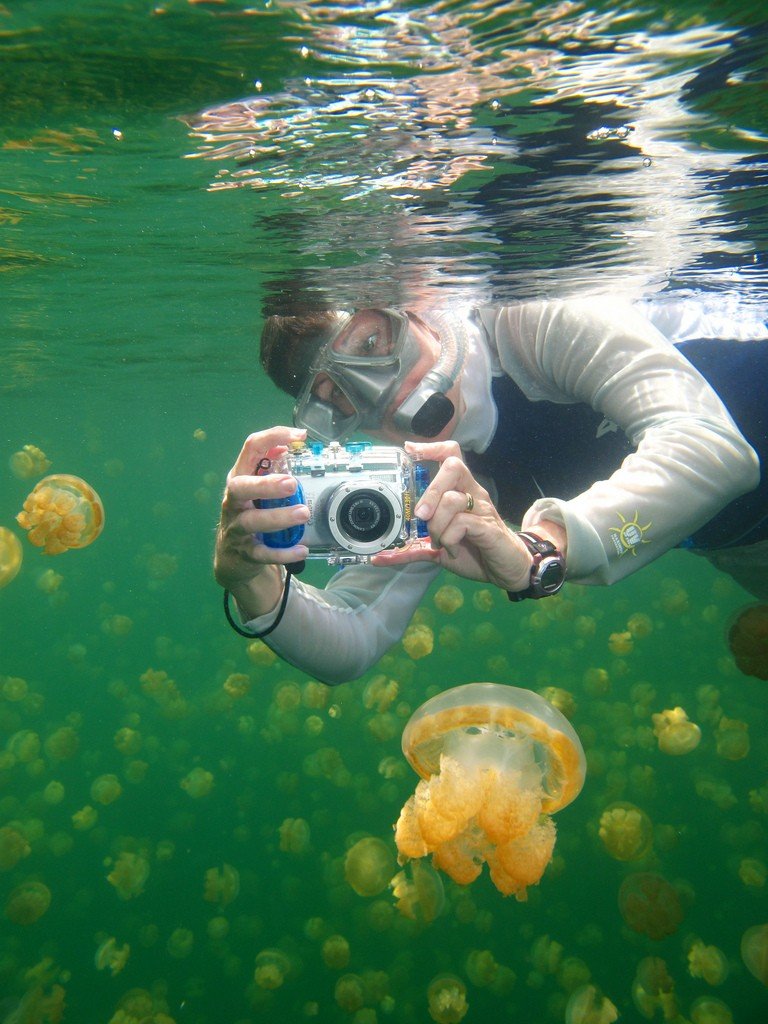
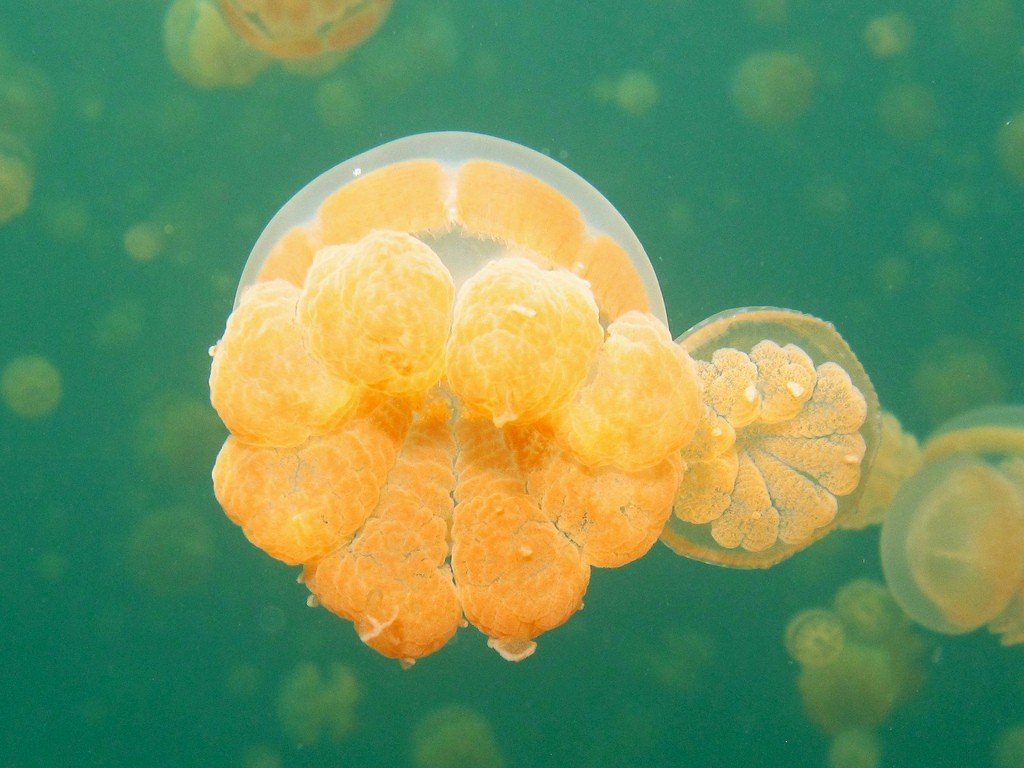
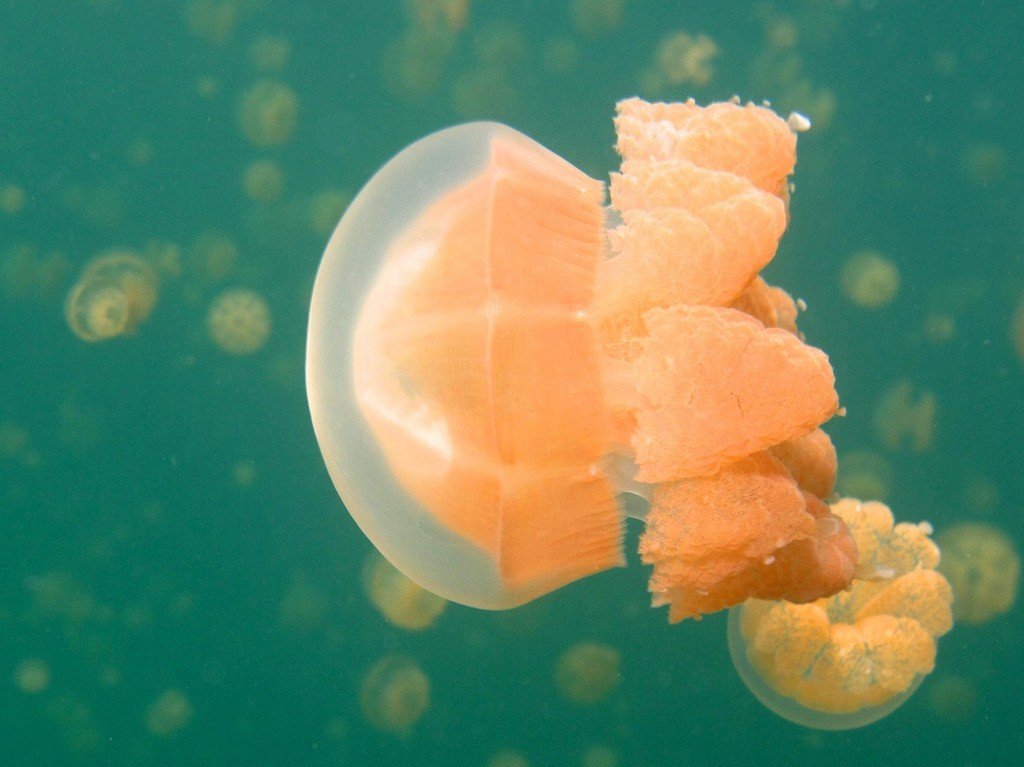
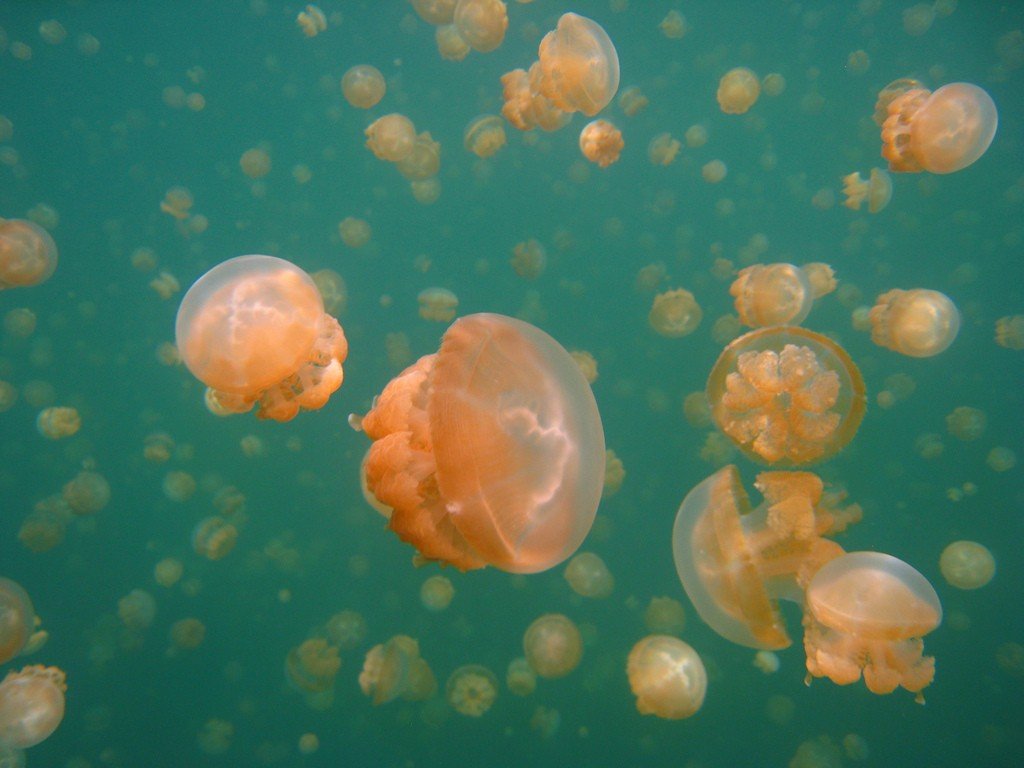
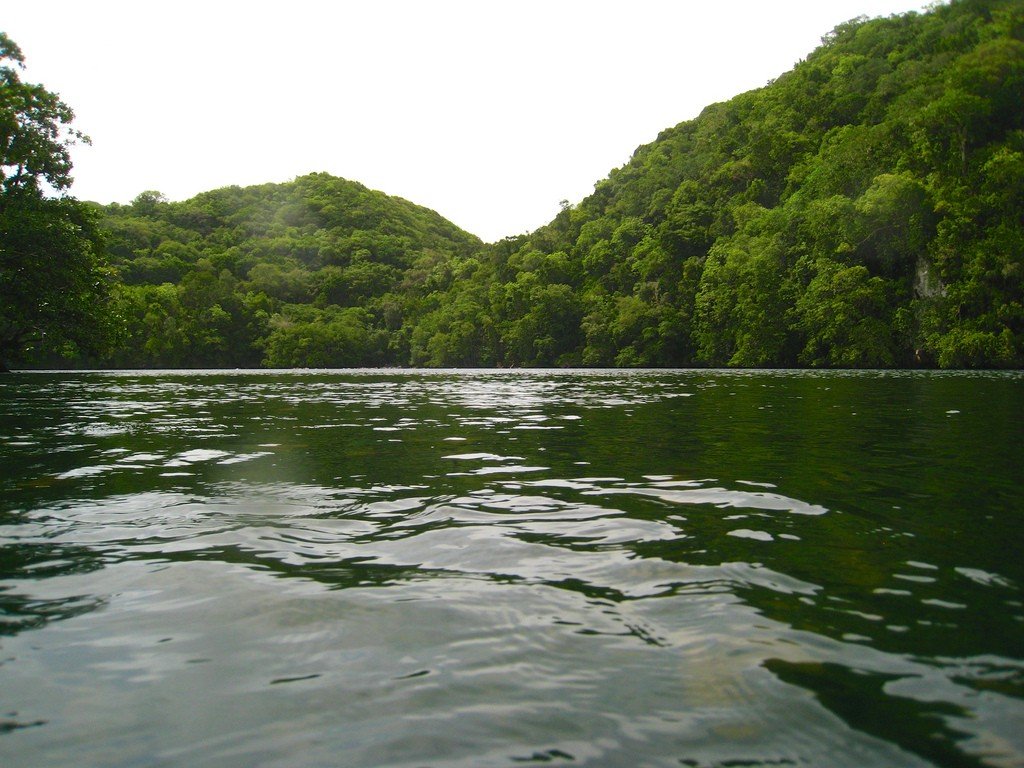
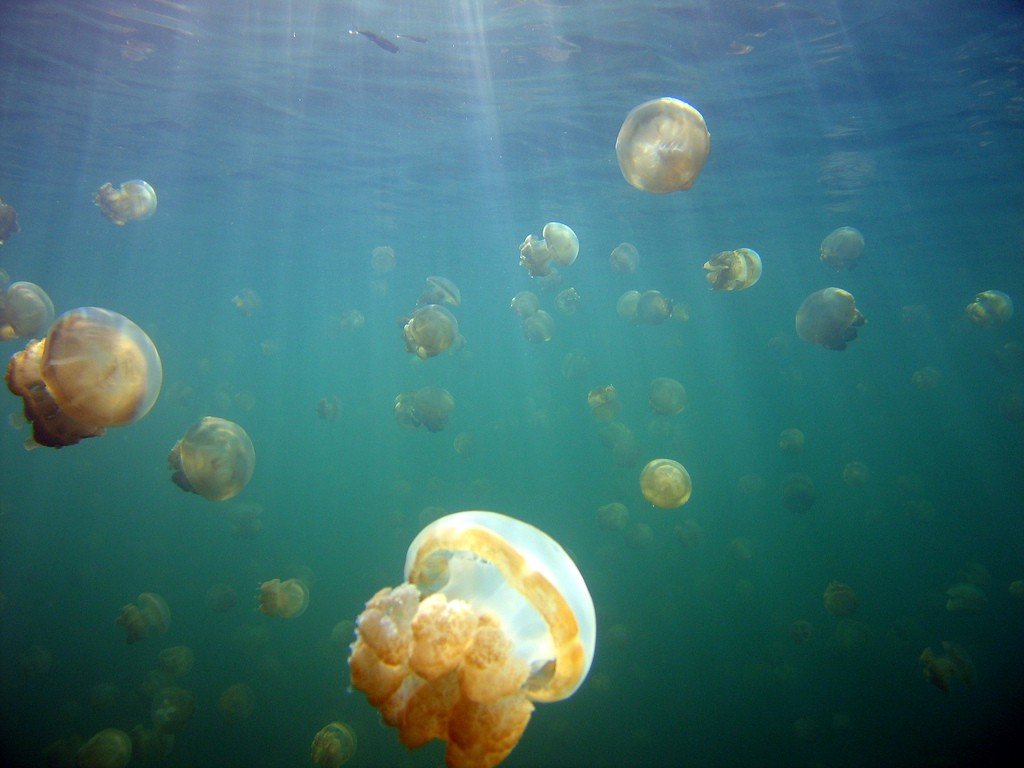
Uniqueness of the lake
More than 15,000 years ago, as a result of tectonic shifts coral reefs began to gradually rise from the bottom, forming above the water surface bizarre coral mazes. At the same time, a large cliff collapsed and its stone blocks fell into the water, cutting off part of the ocean. This formed more than 70 small lakes separated by small patches of land. A few jellyfish ended up in these new bodies of water. Since the jellyfish had no enemies in them, their numbers grew; in the process of evolution, the inhabitants of these waters lost their stinging cells and became completely harmless. This fact attracts a huge number of tourists who want to “communicate” with jellyfish at depth.
.
It is believed that the total number of jellyfish in this unusual lake reaches two million. The number of jellyfish is so large that their masses can easily be seen even when you are in an airplane. However, there are only two species of jellyfish in this lake – the golden jellyfish (Mastigias papua) and the moon jellyfish (Aurelia sp.). The golden jellyfish has a huge numerical superiority over the moon jellyfish. In the structure of the body of the golden jellyfish there are other differences for which some biologists suggest that these jellyfish should be separated into a separate subspecies. Golden jellyfish is a transparent gelatinous body with a golden hue, on the edges of which are small tentacles.
.
These jellyfish do not reach large sizes. Their maximum size is equal to a soccer ball and their minimum size is a cherry.
.The water in Jellyfish Lake is divided into two layers: an upper layer and a lower layer. The upper layer of water contains much more oxygen than the lower and at a depth of 15 meters the air content is almost zero, and the most interesting thing is that the upper layer of water never mixes with the lower. A small inflow of fresh water is provided to the upper layer of water through tunnels connecting the lake with the ocean. The water in the lower layer is saturated with hydrogen sulfide, phosphates and ammonia, in which only a few species of bacteria can survive. It is undesirable for divers to be in the lower layer, because if you do not have a special underwater wetsuit, you can get very serious poisoning through the skin.
.
Since jellyfish need oxygen they try to live in the upper layer of water, but this does not prevent them every day to make frequent migrations both horizontally and vertically, often descending to the boundary of the oxygen-free layer of water. It is safe to say that the migrations of golden jellyfish are carried out with special organization and rhythm. Jellyfish all night and up to dinner, rise and fall in the upper layer of water, to absorb nutrients from it. When morning comes they move from the western side of the lake to the eastern side, and after lunch they gather again on the western side of the lake. Floating near the surface of the water, jellyfish rotate counterclockwise, which provides excellent light to symbiotic algae living in their bodies, and the algae, through photosynthesis, convert the energy of the sun into sugar, which is then fed to the jellyfish.
.
Moon jellyfish move as well as gold jellyfish, but not as organized, although it can be said that their pulsation around the lake, too, has a mass character. At night, moon jellyfish catch paddlefish near the surface of the water, which make up a large part of their diet in the lake.
.
Some biologists have suggested that the migration of jellyfish between the eastern and western parts of the lake is due to the jellyfish-eating actinia Entacmaea medusivora. These actiniae live near the eastern shore of the lake. Jellyfish try to avoid shade and stay in the light. By following a maximally lighted area, they are better able to avoid encounters with actinia that are dangerous to them.
.In 1998, Jellyfish Lake was almost completely devoid of its main inhabitants, the golden jellyfish. By December 1998, their numbers in the lake had dropped to almost zero. It is believed that such a sharp decline in the population was due to the impact of a powerful phase of the El Niño phenomenon, during which there is a redistribution of huge masses of warm water near the surface layer of the ocean.
.As a result of El Niño, the water temperature in the lake increased dramatically, killing the symbiotic algae without which the jellyfish cannot survive. In 1999 not a single golden jellyfish could be found in the lake, but in January 2000 they began to appear again, and today their numbers have fully recovered.
.
Tourists
Picturesque clusters of jellyfish attract a lot of tourists and snorkelers to the lake. Swimming among lake jellyfish is quite safe, as they have almost completely lost the ability to “bite”. But still people with sensitive skin or allergies are recommended to use protective suits when diving. Diving in the lake of jellyfish is allowed only with a mask and snorkel, and the use of scuba diving is prohibited.
.
Scuba diving is prohibited for two reasons: first, air bubbles from the scuba diving get under the jellyfish dome, which can kill them; second, the scuba diving allows a person to dive to a depth of more than 15 meters, where there is an oxygen-free layer.
.Massive diving into the lower layer of the lake will necessarily cause mixing of the upper and lower layers of water (which in natural conditions never happens), and the entire ecosystem of the lake will be irrevocably disrupted, which is fraught with death for all its inhabitants. In addition, a careless diver can get fatal poisoning through the skin, being in the lower layer of water saturated with hydrogen sulfide and ammonia.
.Of all the inhabitants of the lake can pose a real danger to tourists only crested crocodiles. But they themselves prefer to stay away from people, and only one fatal attack has been recorded.
.
